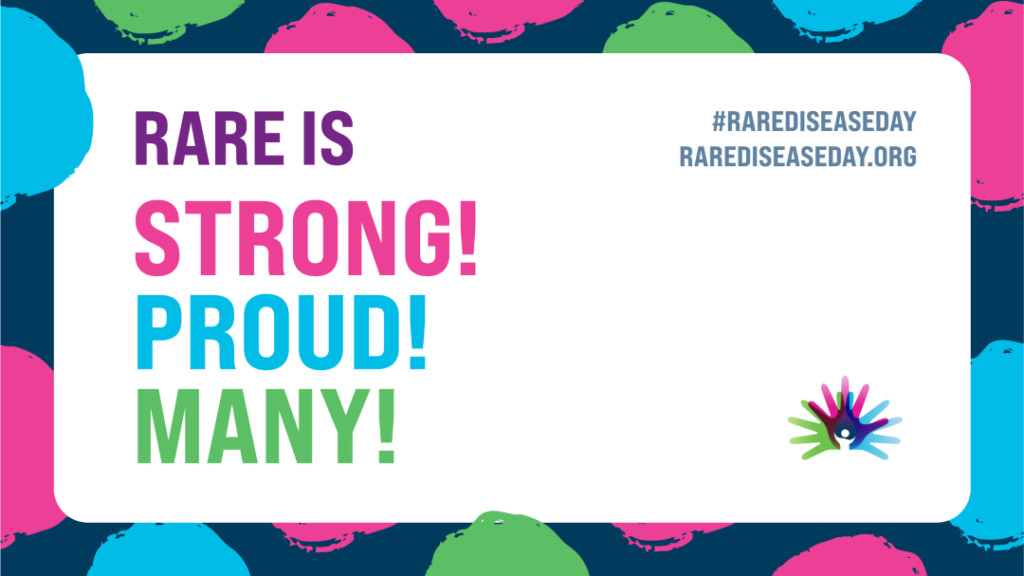This year Rare Disease Day was celebrated worldwide on 29 February to raise awareness and generate change for people with rare diseases.

Although the campaign represents a diverse group of people, it is united in purpose and aims to work globally towards equity in social opportunity, healthcare and access to diagnosis and therapies for people living with a rare disease.
The 2024 theme of Rare is many. Rare is strong. Rare is proud reminds us how important it is to come together and connect as a community. This is an opportunity to share personal stories and acknowledge the challenges for our community members who live with a rare bleeding disorder.
In Australia, a disease is considered rare if it affects less than 5 in 10,000 people.
Around 8% of Australians (2 million people) live with a rare disease.
About 80% of rare diseases are genetic. Diagnosis can often take time because these conditions are complex and doctors do not see them often.1
Haemophilia is considered rare. Approximately:
Researchers are still gathering data on how many females are affected by haemophilia.
Some bleeding disorders are very rare.
For example, factor X (10) deficiency only affects 1 in a million people.
Type 3 VWD is the rarest form of von Willebrand disease, occurring in 1 in 500,000 people in countries like Europe and the USA. Sometimes these rare bleeding disorders are not well-recognised. While only several hundred people have been diagnosed with Glanzmann thrombasthenia worldwide, it is thought that others are undiagnosed.2
In this issue of National Haemophilia, Allison tells her story of living with Glanzmann thrombasthenia and Elizabeth shares her experience of being the parent of a teenage daughter who is growing up with the condition. They both explain what they have learned about managing the challenges and living well.
Sharing personal stories is an important way to help people with rare diseases feel connected. It can also help the wider community to understand better what it is like to live with a rare disease.
You may have seen some other personal stories about living with very rare bleeding disorders on our social media platforms in the lead up to Rare Disease Day.
Our thanks to Allison, Elizabeth and our other community members with rare bleeding disorders for sharing their personal stories. Many people with rare diseases speak of feeling isolated. They may never have met another person with their condition. If they are the first in their family with the condition, it may have taken a long time for them to be diagnosed. Women and girls with haemophilia also talk of not being believed because of the common assumption that only males have haemophilia.
Treatment development is another issue. When rare diseases are very rare and numbers are small, this can mean that the development of new and highly effective treatments is slow. There may even be no treatment that specifically targets that condition. For example, while there has been great worldwide excitement about the new therapies for haemophilia and the difference they make to reducing bleeds and quality of life, there is not yet a specific clotting factor concentrate that is suitable to treat factor V (5) deficiency and fresh frozen plasma may be used for treatment instead.
You can help to raise awareness by sharing the stories of people with bleeding disorders through your personal networks.
Do you have a story of your own about living with a rare bleeding disorder you would like to share? Visit the SHARE YOUR STORY section on the HFA website to tell us more.
For more information on Rare Disease Day, visit www.rarediseaseday.org
REFERENCES
1. Australian Government. Department of Health. What we’re doing about rare diseases. Accessed 20 February 2024
2.Orphanet: the portal for rare diseases and orphan drugs. Accessed 21 February 2024
Haemophilia Foundation Australia acknowledges the Traditional Owners and Custodians of Country throughout Australia, the land, waters and community where we walk, live, meet and work. We pay our respects to Elders past and present and extend that respect to all Aboriginal and Torres Strait Islander peoples.
Sign up for the latest news, events and our free National Haemophilia magazine